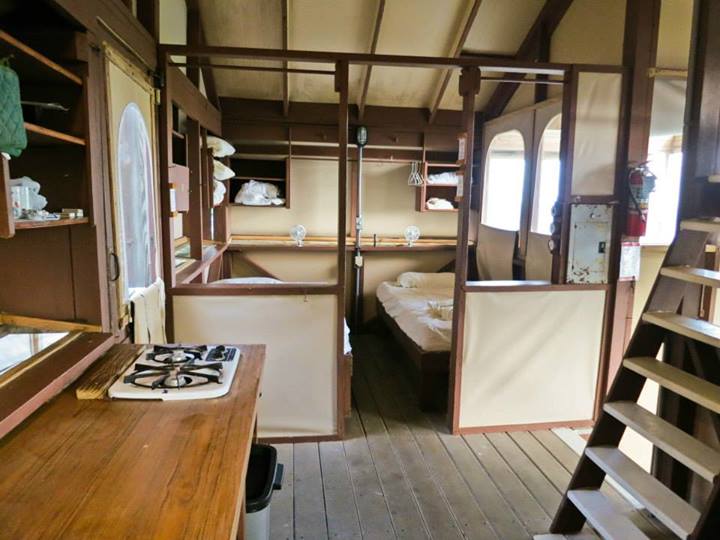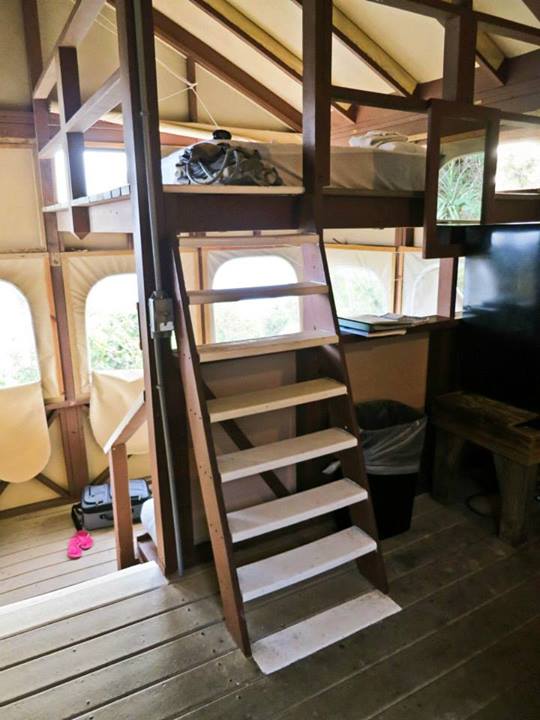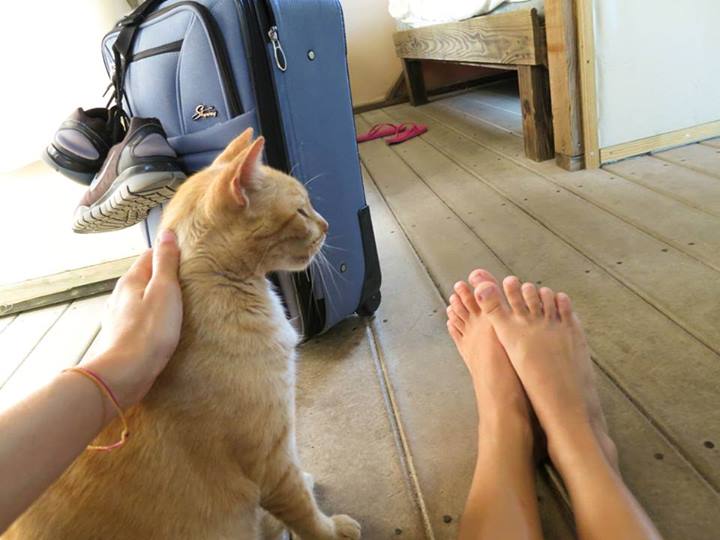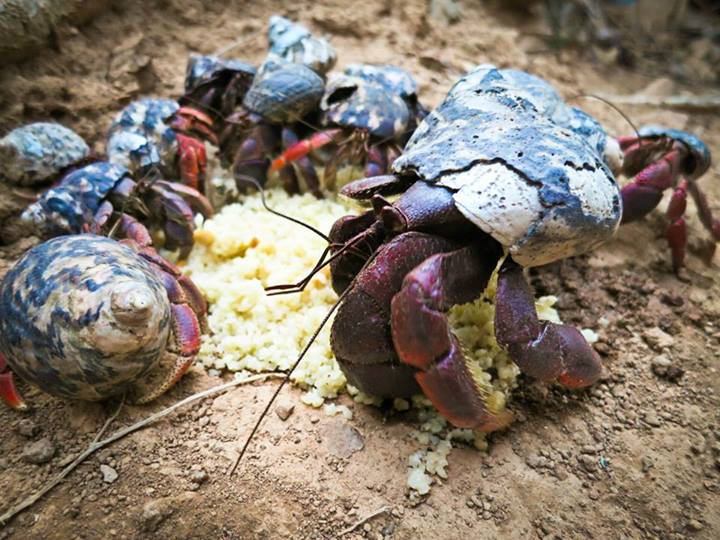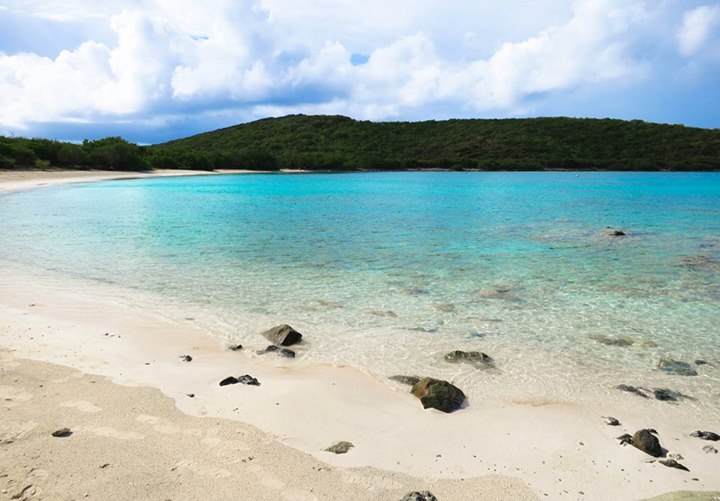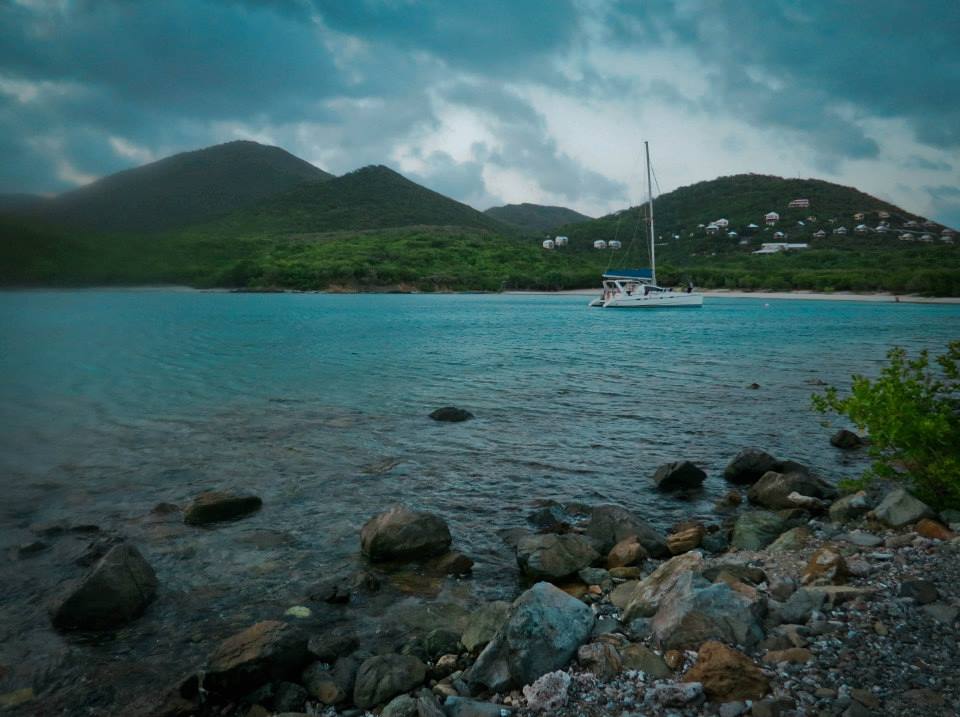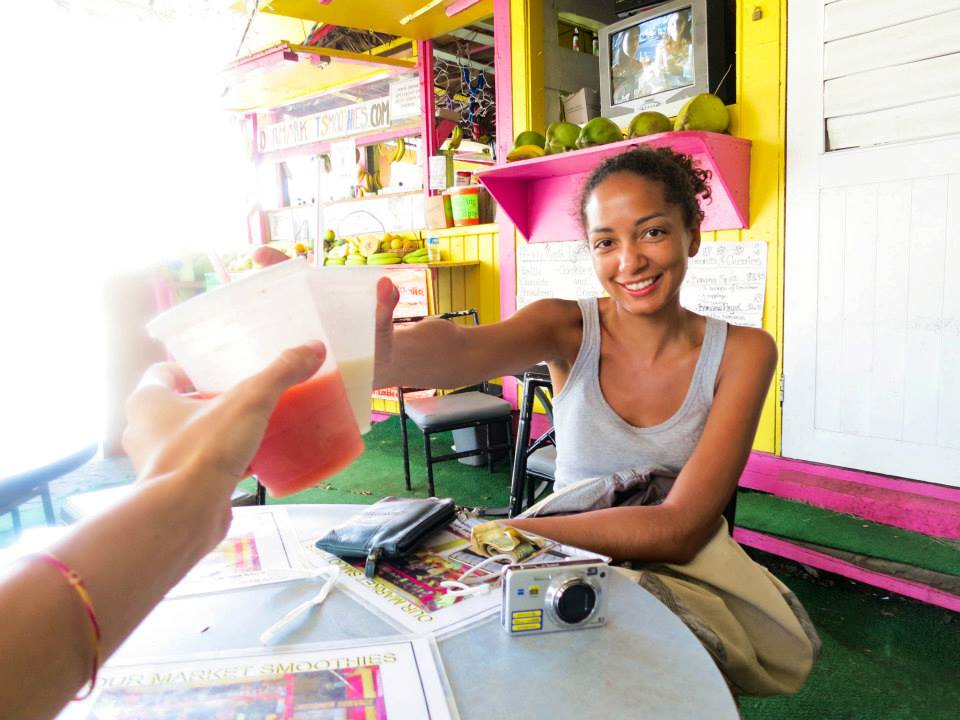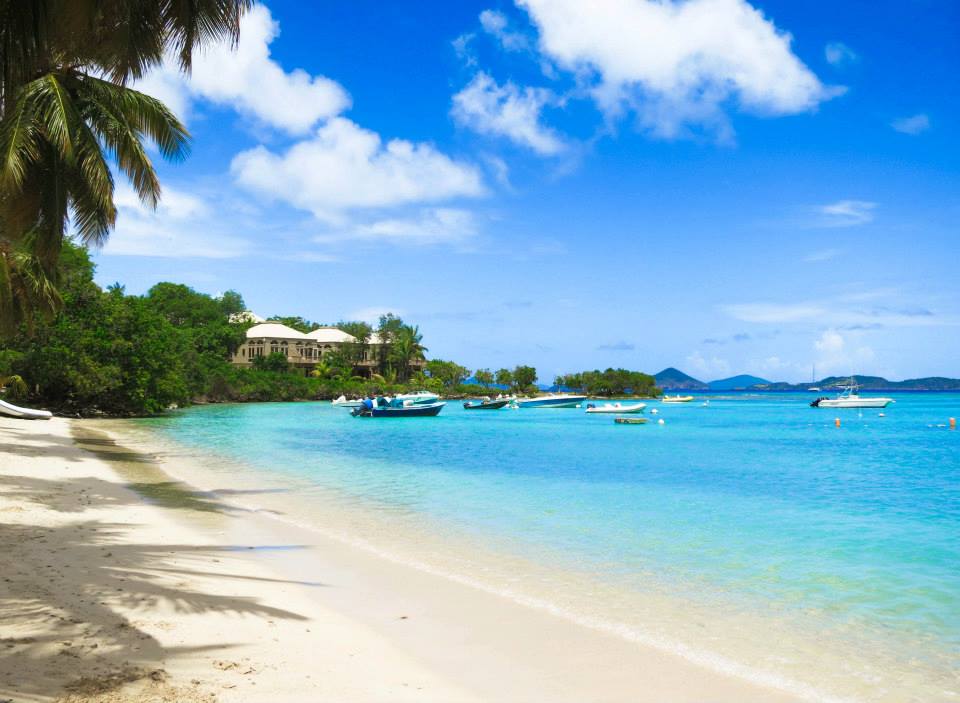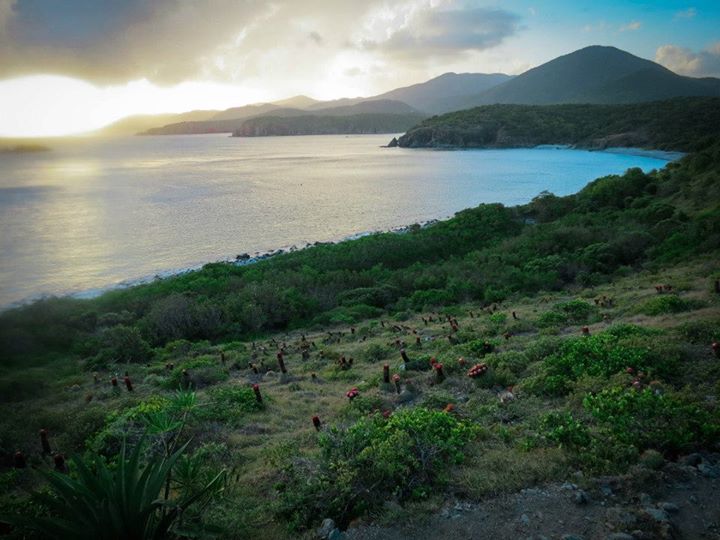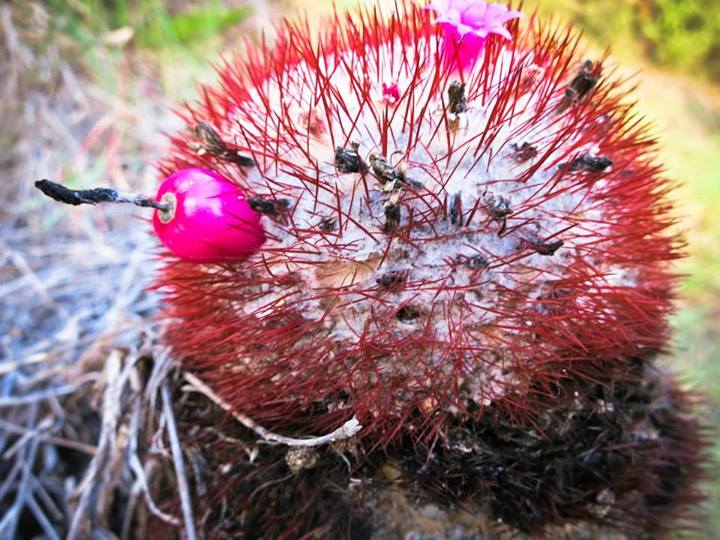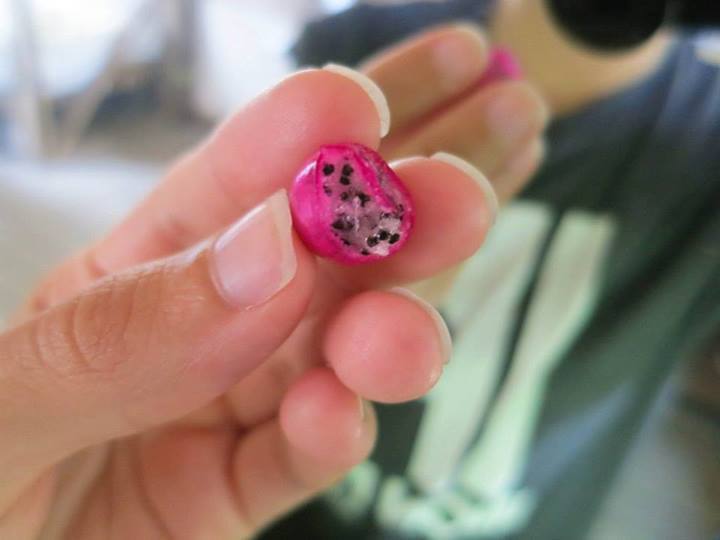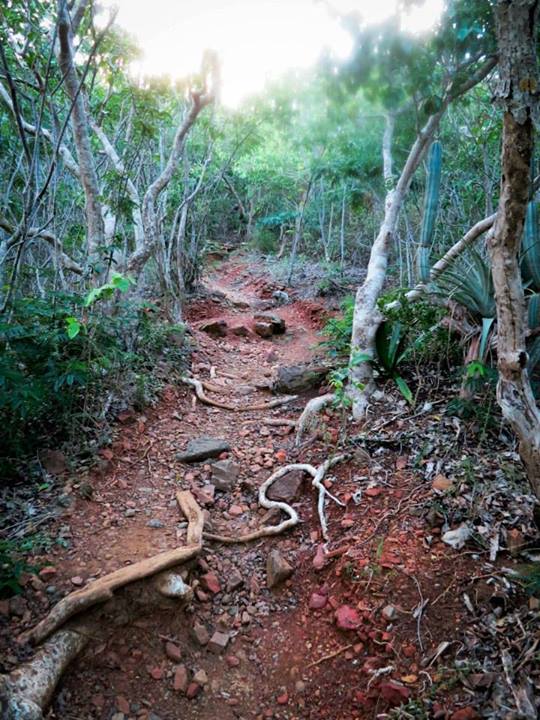Volunteer Life at the Concordia Eco Resort in the Virgin Islands
Table of Contents
Settling In
I went to St John with a friend Id met while doing a work exchange at a retreat center in Hawaii. The retreat center, Kalani, had been set up to be very volunteer friendly with a great community environment, and we were expecting something similar-ish at Concordia. Concordia turned out to be its own unique entity with its own set of pros and cons. Getting there was more of a puzzle: we had to take a plane to St Thomas, a taxi to a ferry station, a ferry to St John, and finally a taxi to the resort. It was a long day of travel. The taxi was kind of fun though because it was open-air, although I was pretty car sick by the end of it. The roads are incredibly winding.

When we finally arrived at Concordia, my friend (Michelle) and I checked in for duty and were briefed about the property and our schedule: we would have the evening and the next day off to get settled in before work. We lugged our bags to our Eco-tent, but since we had been told we would need to switch to a new tent in a few days, we didn’t unpack. The tents weren’t what you would normally imagine tents to look like they were more like tree forts with vinyl walls and screens for windows. Each unit contained a few beds, a kitchenette with cookware, and an unattached toilet and shower. Some rooms were split-level, adding to the tree house feel, and each had a small porch. From ours we could see the ocean and feel the nice sea breeze. Unfortunately ours was one of the tents without potable water and with no electrical outlets (although it did have a mini fridge), so we had to lug heavy containers of water up many flights of stairs and store them in our refrigerator.
We were eager to see the beach and told that we could take the hiking trail down (a fifteen minute hike) even in the dark, as long as we brought flashlights. About a minute into the hike though, Michelle and I stopped in our tracks when we saw an enormous shelled sand crab right in the middle of the path, about as big as two fists. We decided our first hike should probably wait until daylight. Who knows what other kinds of wildlife were hiding in the woods?
Our first night was uncomfortable. We didn’t have much food to eat and I cooked some plain pasta (no sauce), and despite being covered in sweat and grime we were unable to figure out how to use the shower. Our room was very windy, so much so that every few minutes we would be woken up to what sounded like someone violently breaking in to the room, but which was actually just the vinyl walls flapping against the frame of the tent. (Later we learned that we were extremely lucky to have one of the only rooms with such a strong cross winds, because despite the noise, our tent was dramatically cooler than most of the others.)

View from our tent
On our second day, which was our first time waking up at Concordia, we knew we had to go shopping for food before heading to the beach. The one bus to town charged a $1 ride fee, so we hopped on with a really sweet couple we had met the day before. We had been warned that the grocery store looked like a place you would want to stay away from run down and off the beaten path but that it was actually perfectly safe and had the biggest selection on this side of the island. So we loaded up on food and waited for the bus back (which never showed up, by the way. Apparently that just happens sometimes. We debated hitchhiking but ended up taking a taxi) and as we waited, a whole bunch of clucking chickens and a pack of donkeys wandered by. The donkeys looked at us, but the chickens didn’t care that we were there.
When we finally had to move from our first eco tent to our second, we realized sadly that it was a bit of a downgrade. I was excited at first to find that a cute orange kitty lived near our new home, and he decided to invite himself in. I pet him for a few minutes and shooed him out eventually, but the second time we let him in he nearly bit me when I tried to get him out, so that was the last time he was invited over. Luckily as soon as Michelle picked up the broom he knew he was unwelcome and got the heck outta there.
Concordia also had two architecture interns around our age, who let me photograph some of their beautiful drawings to put on my site. I think they are more fun to look at then some of the photographs I took:

A standard Eco-tent at Concordia

A view of the walkway to the eco-tents

The interior of an Eco-tent: the loft above contains extra beds. Out of frame is a kitchenette and small living area.
Another fun thing about the tents were the many sand crabs who lived under and around it: we quickly found out that the enormous one we saw on our first night was one of thousands. They are nothing to fear: they are slow moving and stay out of your way for the most part. There are many of them on the hiking trail, but they curl into their shells when people walk by. So many of them tumble as they curl up though, that it sounds like rain as you walk by. But the best part? If you have leftover food, throw it on the ground outside of your tent and watch as one crab comes to eat, then five more, then ten at first it is cute, but by the time a hundred crabs are scampering over each other trying to eat your leftovers, it gets kind of gross.
The Beach
Back at our Eco tent, we prepared for the hike to the beach. I packed my snorkel and mask and we began walking. The hike was actually a lot tougher than I expected: the path was roundabout and turned back uphill before descending all the way to the beach. In normal weather it wouldn’t have been so bad, but ninety-degree heat made it difficult. Of course, the beach was absolutely worth it.
I’ve never been to a beach like that one, and I couldn’t have imagined it any better. Dream up your ideal beach, then double its beauty, and you’ll have Salt Pond Bay. I suddenly became grateful for the 15-minute hike down, because I imagined it severely limited visitors to the beach and kept it from over crowding.
The beach was a long, curved stretch of sand with shaded picnic areas under the trees. The water was a perfect sea green, surrounded on three sides by deep green hills and the other by open ocean. There was actually a small rock island right outside of the inlet which supposedly had excellent coral life for snorkelers to explore, but I never went out that far myself for fear of being carried away into the sea. You never know when those rip tides will get you.
Michelle swam and tanned and I was really excited to do some snorkeling. (Without fins though, because they feel to restrictive.) The water was as warm as bath water and perfectly still. The sea life was most abundant along the rocky sides of the beach, the leftmost side especially (when you are facing the ocean). I got up close with tons of colorful fish and some coral and some painful-looking sea urchins. Oddly enough my favorite fish were the little minnows. They traveled in huge schools and I tried my best to get caught in the middle of them, so that no matter what direction I turned, all I saw was tons of sparkling fish that looked like little stars. It felt like I was in the night sky, but underwater.
After a long time I thought I would head back in, so I swam back out toward the beach.
In the middle of the inlet, where there was sand as far as you could see and nothing growing in it, I found a huge stingray. It was really exciting and I debated getting closer to it. I know that stingrays are pretty harmless, but that stinger just looks like a weapon waiting to be wielded. So before I got any closer I decided to spin around and make sure I had a quick escape route to the beach, but what I saw made my decision much harder.
Directly on my opposite side was an enormous sea turtle! It was about as big as both of my arms fully spread, and it was munching a small patch of grass on the ocean floor. The two amazing creatures were moving apart from each other and I was stuck in indecision. Which is cooler, a stingray or a sea turtle?
The sea turtle won out. I hovered almost directly over him and watched him eat for a few minutes. Finally he needed to come up for air and began to rise to the surface very slowly, so I swam along beside him. I could have reached out and touched him. It felt more like flying than swimming I was flying with a sea turtle!
He took a breath of air and went back down for more food. I knew he have to breathe again eventually, so I waited for five or ten more minutes, and this time when he resurfaced I reached out and felt his shell. It was a little scary petting a turtle that was nearly as big as me, but very fun. He got his air and went back down again. I waited with him and flew with him for about five more breaths before I decided to go lay on the beach.
This was how Michelle and I spent nearly all of our afternoons. After that first day we usually brought my bright pink inner tube too. Michelle discovered that if you plant your face in the center of the tube, its nearly as good as snorkeling you can see right down to the bottom of the water without having to breathe through the snorkel.
There are other great beaches in the area, which all are appealing for different reasons. Salt Pond Bay, however, was said to have the best snorkeling. Volunteers also had the option of island-hopping during their days off, though that can get expensive and defeat the purpose of volunteering as a means to travel cheaply.
Food
Food is expensive on the island so most days we had pretty bland meals: pasta, rice, and cream of wheat with some kind of flavoring mixed in. We had juice instead of real fruit most of the time. About a fifteen minute walk from our tent was a place called the Tourist Trap, a tiny restaurant/bar that gets rave reviews from everyone at Concordia who visits it. In my opinion, the reviews aren’t really warranted: the small selection of food isn’t that great, but the place just happens to be dramatically closer and easier to get to from Concordia then any other place but Concordias own cafe, which has odd hours. Regardless, I did enjoy their nachos (not something Id normally eat if there was a healthy option available), and they had a good selection of tropical drinks, including a favorite of many tourists, the BBC. For a while I couldn’t understand why there was a drink named after a television network, but then I discovered it stands for Baileys Banana Colada. Now if you know anything about tropical drinks you probably already knew that but I did not.
The Town
The main town on St John, which is where the ferry terminal is, is a long drive from Concordia. We took a bus in one day just to see what the town was like, but I wouldn’t go back a second time. There wasn’t much to do and the beach area was full of boats (and ferries). There were a few decent places to eat, including a smoothie shack where me and Michelle got our first fresh fruit since wed arrived. I went back to that shack a second time when I was leaving the island.
The town and most of its stores (except for the Uber-touristy ones) looked pretty run down, but I think that is something that comes with most tropical islands. It is difficult to build things that will stand up to the rain and heat, especially when importing is made so difficult because of geographic isolation. All in all, the town wasn’t too exciting and I think it was a better hangout for the other volunteers who liked to drink a lot in their downtime.
The Volunteer Work
And I suppose I should mention the actual volunteer work, as I’ve made volunteer life seem like a giant vacation. It was far from it. The work, while in any other setting would be perfectly easy, was made very difficult by the heat. Volunteers were split up into groups, but were often split into pairs with the people they came to the island with meaning Michelle and I worked together most days. We did a lot of housework and took inventory a bunch of times. The coordinators seemed to think taking inventory should last us the full six hour day (seven if you count the lunch half-hour and two fifteen-minute breaks), but we accomplished it in an hour and a half, tops. When we asked for more work there really wasn’t anything for us to do I actually forget what we ended up doing that day. But what I want to drill home is that despite the fact that the work was simple, we were dead tired every day by the time we headed down to the beach.
And the men had it worse: even those who had never built a thing in their lives (like our friend who had a comfy office job back home), were put on the construction team and helped to build a new eco-tent. Michelle and I passed them a couple of times throughout the day, standing on top of the framework of the structure in the hot sun. It made our job seem a lot easier.
Work began early in the day and ended at 2:pm, except for the two female volunteers who worked as waitresses in the cafe at night. Each volunteer received two days off per week, but usually the only other person who would have off on the same days as you would be the partner you came to Concordia with (if you came with one), so it made it a little more difficult to hang out with people, and nearly impossible to plan group trips. Getting away from Concordia to see other places turned out to be a lot more difficult in general than I expected it to be, so we spent most of the time on campus and at the beach.
Hiking
There are some really beautiful hiking trails in the area: one of the most notable is the Rams Head Trail, mostly because it is right off of Salt Pond Bay and therefore extremely easy to get to. Michelle and I hiked that one evening (hiking during the heat of day isn’t the most fun thing to do), and it was really spectacular. I don’t remember exactly but I’m going to ballpark estimate that the entire round trip would take an hour and a half. We didn’t make it quite to the end because the sun set and we didn’t want to hike all the way back in the dark, but near the end of the trail were some really beautiful views. My favorites were an opening in the cliffside where you could see down onto big waves crashing over rocks, and a huge sloping field full of round little Thurks Head cacti.
I thought these cacti were pretty incredible because they bare edible fruit that looks like tiny neon pink peppers, which you can pull from their own little burrow-like holes in the top of the cactus. I gathered a bunch and (after making absolutely certain that they were edible) tasted a few. The flavor, unfortunately, was pretty boring and mild, but they were cool looking on the inside too, with white pulp and lots of tiny black seeds.
On the topic of fruit, there are also wild mango trees around so if you come in the right season you might be able to snatch a few before they are all picked by people and animals. And on one of my bus rides, a nice older man in front of my gave me some Spanish Lime (thank you xchell for the correction). It was nice to get to try them but they too were pretty boring-flavored. However, if you’re interested, it is easy to find these fruits growing wildly in bushes lining the beaches all over the island.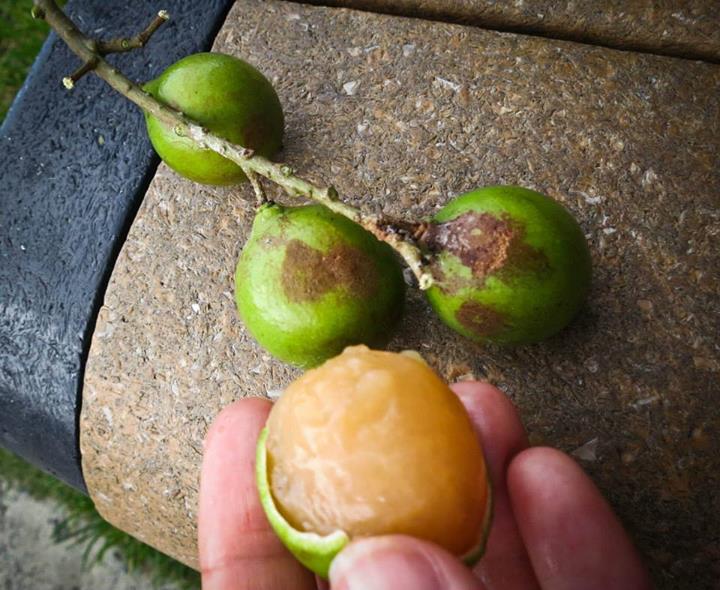
The hike down from Concordia to the beach, while not nearly as exciting or picturesque, in kind of nice. About halfway there is a little architectural ruin where I found a few pieces of an animals skeleton that looked pretty cool.
Other Details
Here are some things you might want to know if you are considering working at Concordia:
There is no cell service. There is wifi, but only around the pool area and at a bench outside the main office. Occasionally you can get wifi at the cafe, which is nice because there are tables and chairs and a roof over your head.
Meals are not included. You pay for your own food, whether you buy it at the cafe or at a grocery store. There are kitchenettes in the eco tents, with a refrigerators, stove, sink, and cookware.
There are washers and dryers on premises, but you need to pay to use them. I just did my laundry in the sink.
Each eco tent comes with an unattached bathroom/shower area. Luxury level of the bathrooms is low (and so is the water pressure) so this may not be the place for you if you like to feel very fresh and clean every day. I suppose the experience is like glamping.
The people are friendly: Concordias employees will be very nice to you, despite the fact that they meet tons of new volunteers who come and go constantly and probably all ask the same stupid questions. The other volunteers were all very nice too, and of all the places Ive been they seemed to be the most grown up acting and well-rounded. Though to be fair, the sample size was very small. There were probably about ten volunteers in total including me and Michelle, or maybe even fewer.
The beach is a great place to watch meteor showers if you can plan to be there at dark with flashlights. Youll be able to see meteors most days of they year, but during the biggest meteor showers of the year youll be able to see many more (August 12, for example, is one of the best meteor nights of the year.)

